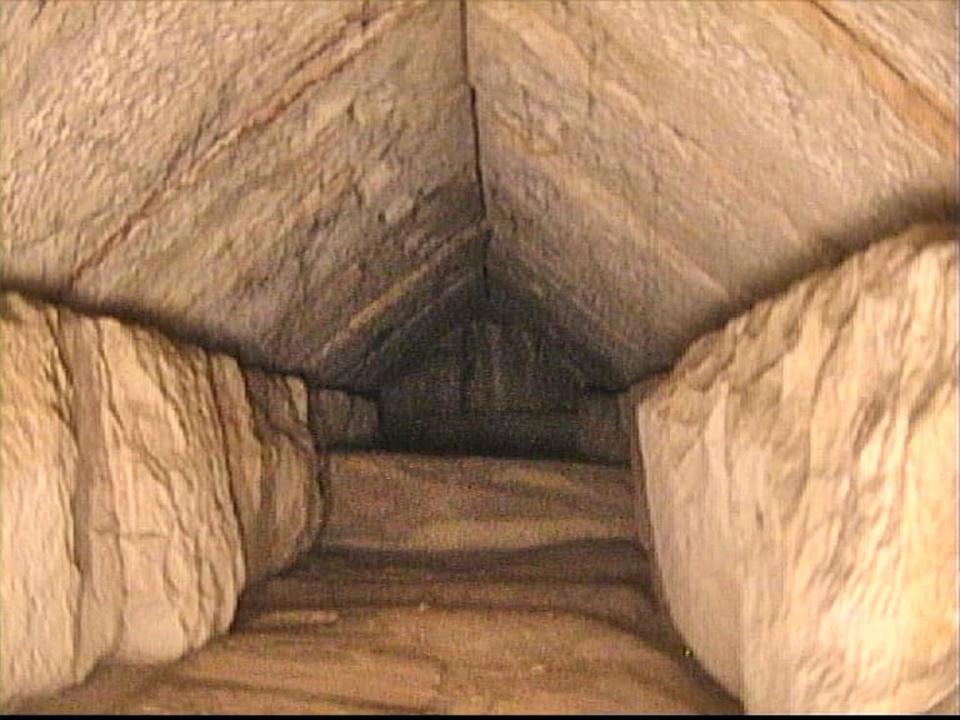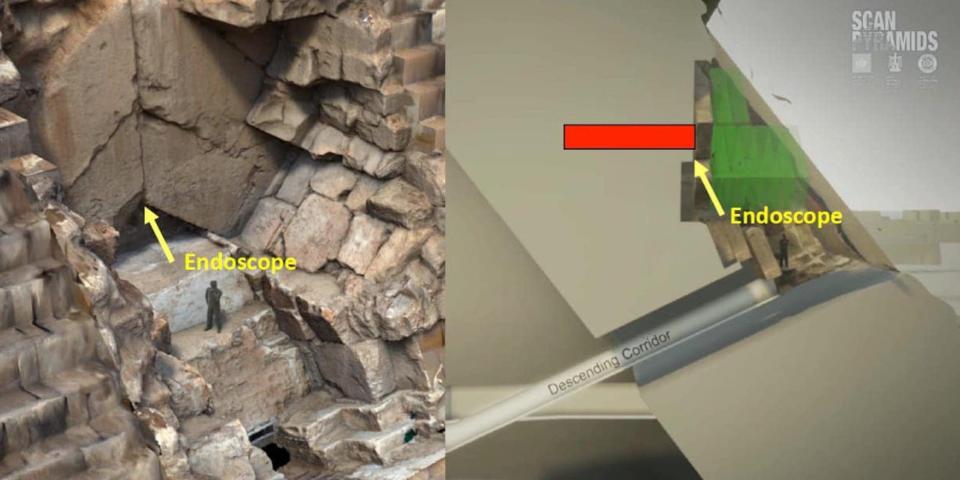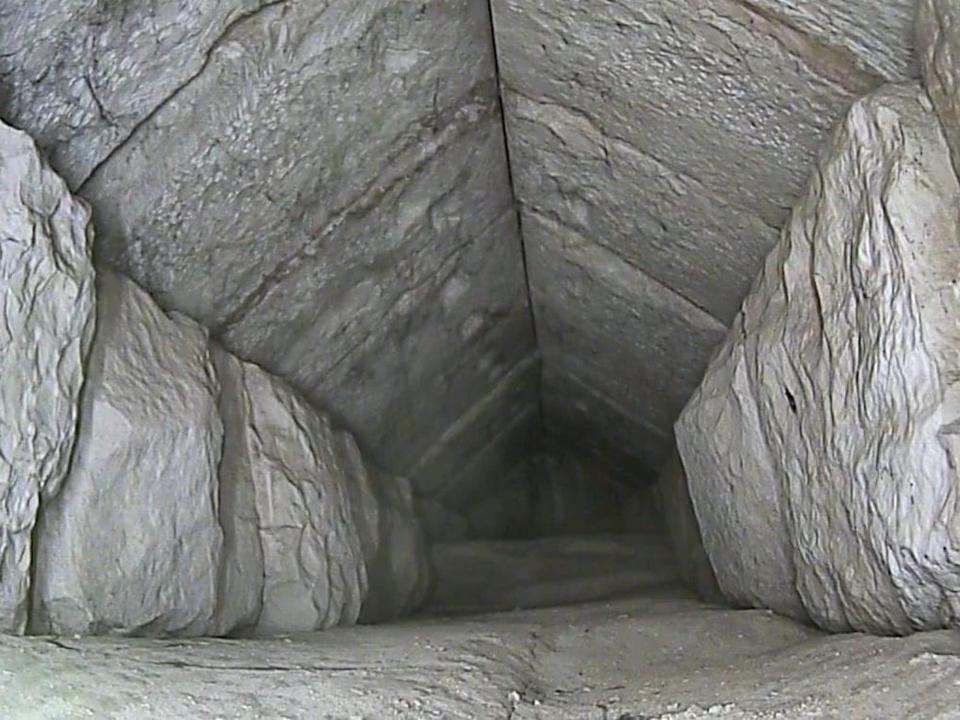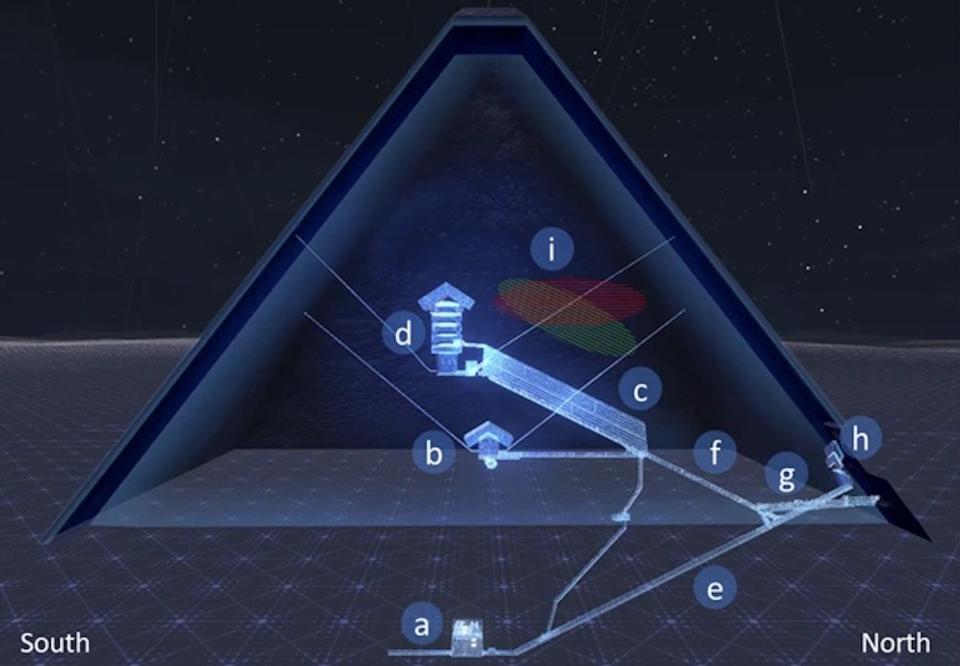Archeologists found a hidden corridor in the Great Pyramid at Giza by using cosmic rays to map the ancient wonder
A hidden corridor has been discovered within the Great Pyramid of Giza using cosmic rays.
The corridor is 30 feet long and located near the entrance of the 4,500-year-old structure.
It could lead to new discoveries within the seventh wonder of the ancient world, researchers say.
A hidden tunnel has been discovered within the Great Pyramid of Giza, a team of international archeologists announced in Egypt on Thursday.
The 30 foot long corridor is located on the North face of the 4,500-year-old pyramid and could lead to new discoveries within, Reuters reported.
"This discovery, in my opinion, is the most important discovery in the 21st century," Zahi Hawass, former Egyptian minister of antiquities and archaeologist, said per the Today show.
Archaeologists believe the vaulted corridor was designed to help distribute the weight of the giant ancient wonder of the world.

"This corridor, it's protecting or reducing the pressure on something beneath it. Might be a chamber, might be something else," said Mostafa Waziri, Egypt's supreme council of antiquities.
Waziri said he hopes the purpose of the corridor will become clear "very soon."
"We're going to continue our scanning so we will see what we can do ... to figure out what we can find out beneath it, or just by the end of this corridor," he told reporters, per Reuters.
The discovery was made as part of Scan Pyramids, a project started in 2015 that uses a technique called cosmic-ray muon radiography to investigate what lies within the pyramid without causing any destruction.
The technique relies on radiation fired through the pyramid. By reading the radiation that arrives at detectors placed around the pyramids, scientists can infer the internal structures of the monument, per New Scientist.

The cavity was first discovered in 2016, and early scans suggested there was an unknown void behind the opening. The entrance of the cavity, seen above, was likely hidden under the covering of the pyramid.
Thanks to the muon imaging, the scientists realized the structure was close enough to the surface that they could reach it with a tiny camera called an endoscope. By squeezing it through the smallest cracks, scientists were able to look at the inside of the cavity for the first time since it was closed.

This confirmed the presence of the cavity, which is thought to have a small upwards slope.
The findings were published in the peer-reviewed journal Nature Communications on Thursday.
"We knew the cavity was there, but of course it's totally different when you see it," Sébastien Procureur of the University of Paris-Saclay in France and an author on the study, told New Scientist. "We felt strange when we saw this."
This is a "fascinating discovery," Wojciech Ejsmond an Egyptologist from the Warsaw Mummy Project who was not involved in that work, told Insider in an email.
"Scientists were speculating about potential hidden rooms and cavities within the pyramid for decades. Now we have some indications of where to look for them. The discovery just by the entrance to the pyramid is very surprising since it is a very well-known spot," he said.
The hope is that the corridors could uncover previously unknown chambers. So far, four chambers have been uncovered, shown in the diagram below: the subterranean chamber, the queen's chamber, the grand gallery, and the king's chamber.

The Great Pyramid at Giza was initially constructed in 2560 BC under the reign of Pharaoh Khufu.
The 450-foot tall burial monument was the tallest human-made structure on the planet until the Eiffel Tower was built in 1889.
Read the original article on Business Insider

